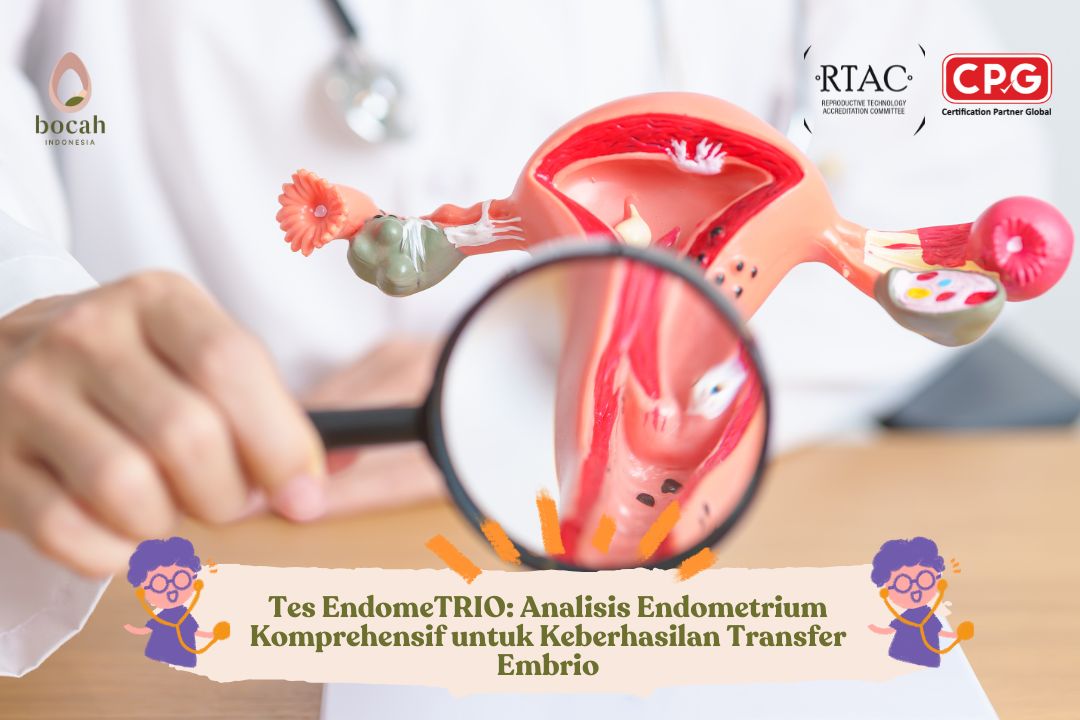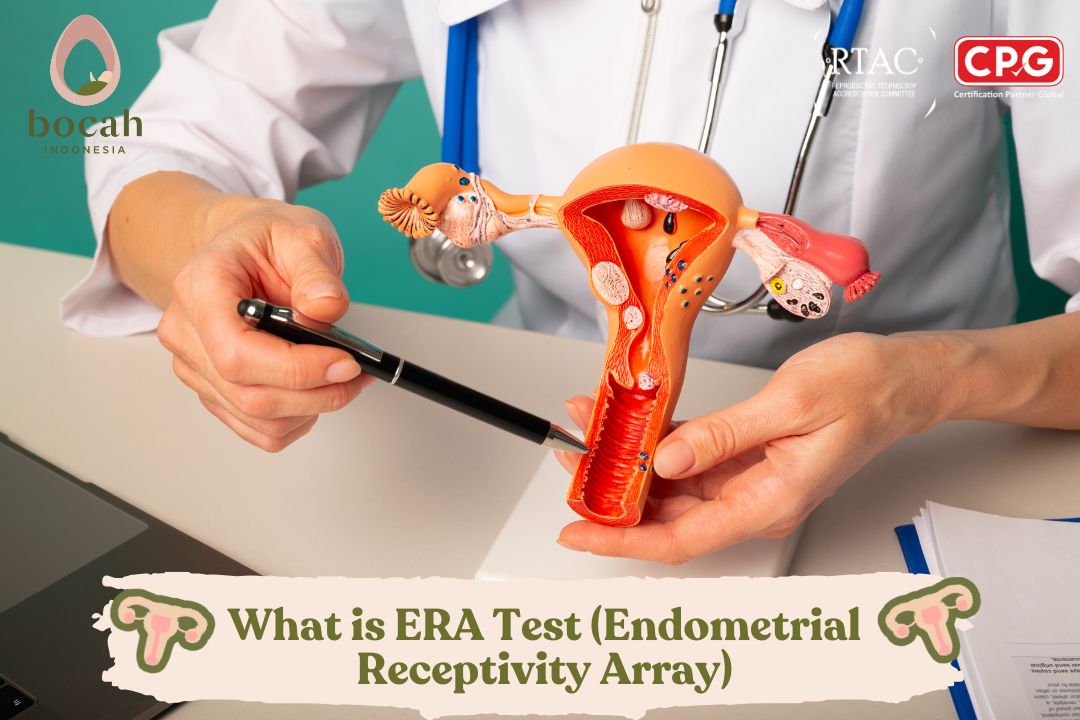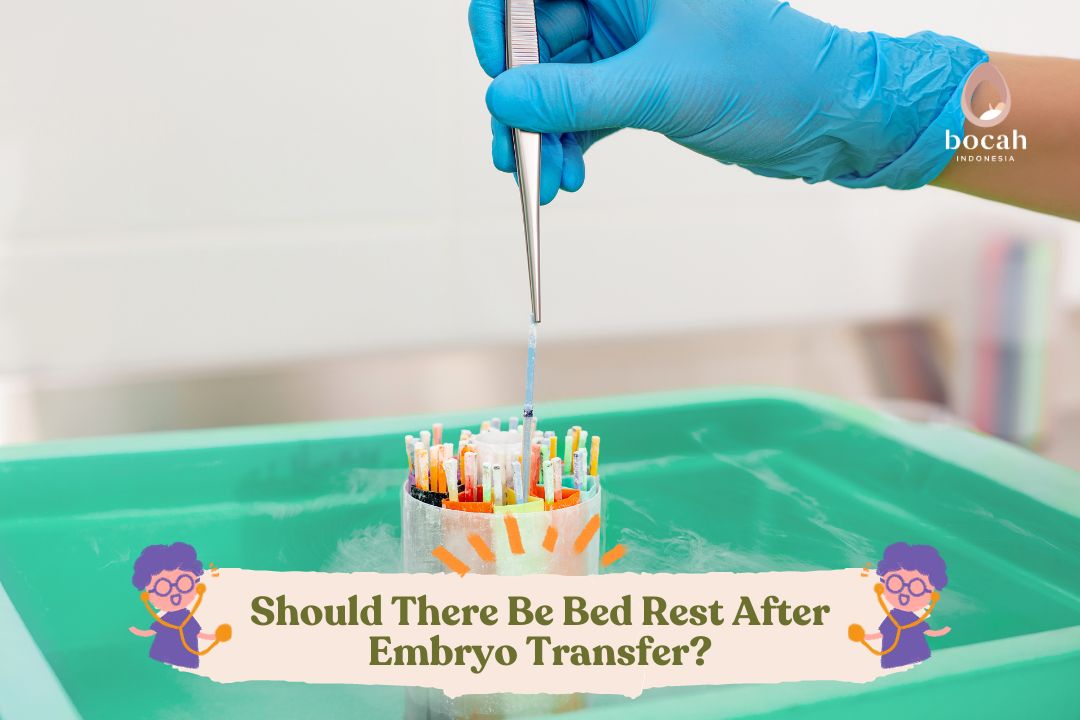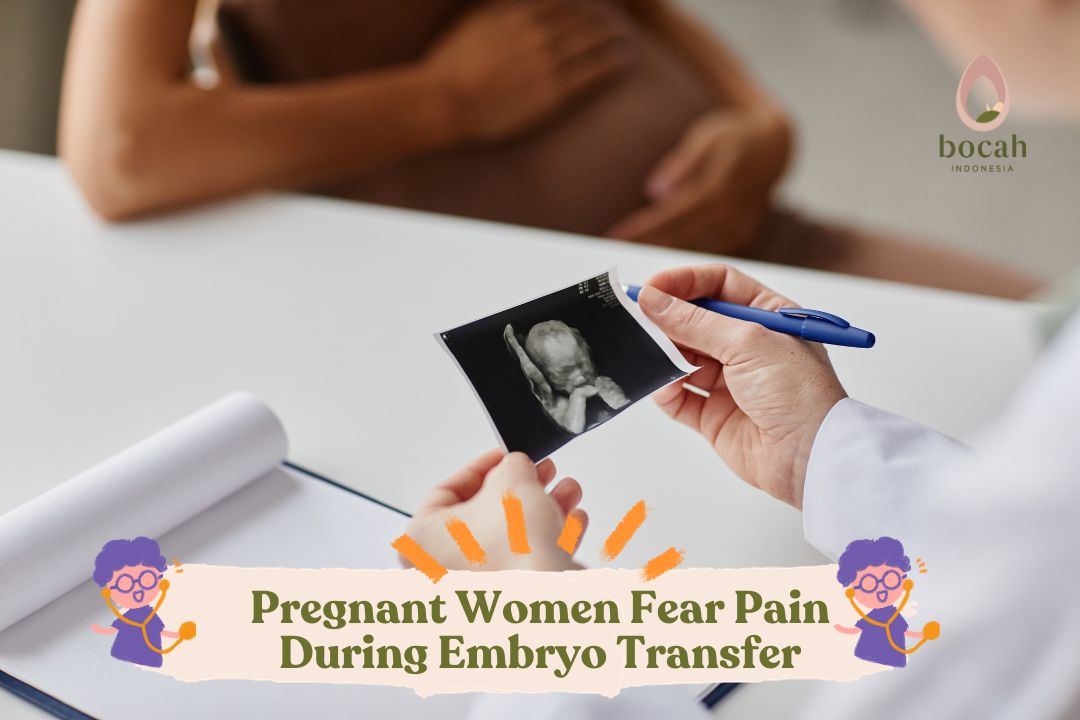EndomeTRIO Test: Comprehensive Endometrial Analysis for Successful Embryo Transfer

Modern medical technology now enables a comprehensive evaluation of the uterine lining, or endometrium. This assessment, known as the EndomeTRIO Test, includes a complete endometrial analysis designed to improve pregnancy success rates in in vitro fertilization (IVF) programs.
EndomeTRIO comprises three diagnostic components:
-
ERA (Endometrial Receptivity Array)
-
EMMA (Endometrial Microbiome Metagenomic Analysis)
-
ALICE (Analysis of Infectious Chronic Endometritis)
Tanya Mincah tentang Promil?
Each test evaluates the endometrium from a different perspective, allowing physicians to obtain a comprehensive understanding of endometrial health.
The Importance of the Endometrium in Achieving Pregnancy
The endometrium is the innermost lining of the uterus, where the embryo implants—marking the very beginning of pregnancy. To fulfill this role, the endometrium regenerates during every menstrual cycle and becomes receptive during a woman’s fertile window.
A receptive endometrium is characterized by sufficient thickness and optimal cellular structure to support embryo attachment.
However, in some cases, the endometrium may not provide an ideal environment for implantation. This condition, known as endometrial factor infertility, accounts for approximately 20% of infertility cases.
For a successful pregnancy, the endometrium must not only be receptive but also rich in healthy bacteria. Infections caused by harmful bacteria can lead to endometrial disorders, such as chronic endometritis, which are associated with poor reproductive outcomes.
What Is the EndomeTRIO Test?
As mentioned above, the EndomeTRIO test is a comprehensive analysis of a woman’s endometrial health. It is particularly recommended for patients with a history of recurrent miscarriage or repeated implantation failure.
To perform this test, a biopsy of the endometrial tissue is required. The biopsy sample is then analyzed through three distinct tests—ERA, EMMA, and ALICE—each providing clinically relevant insights into endometrial function and microbiome composition.
ERA (Endometrial Receptivity Array)
The ERA test is a molecular diagnostic assay designed to identify the most optimal time for embryo transfer. The results determine the opening of the so-called “window of implantation”—the precise period when the endometrium is most receptive and supportive of embryo implantation.
This test uses Next Generation Sequencing (NGS) to evaluate the expression of 248 genes associated with endometrial receptivity.
Interpretation of ERA Results
-
Receptive: The endometrium is ready for embryo transfer. The same hormonal protocol used during the biopsy should be followed for the subsequent embryo transfer cycle.
-
Non-receptive (Pre- or Post-receptive): Indicates that the endometrium’s window of implantation does not coincide with the time of the biopsy.
-
Pre-receptive: The endometrium requires additional progesterone exposure; embryo transfer should be delayed by several hours or days.
-
Post-receptive: The endometrium has passed its optimal phase; embryo transfer should be advanced by several hours or days.
-
During the biopsy, fertility specialists often perform ultrasonography to evaluate uterine and endometrial characteristics.
Key parameters that indicate good endometrial receptivity include:
-
Endometrial thickness greater than 8 mm
-
Presence of intra-endometrial vascularization on the day of embryo transfer
-
Endometrial volume greater than 2.5 mL
EMMA (Endometrial Microbiome Metagenomic Analysis)
The EMMA test analyzes the endometrial microbiome, which consists of the types and quantities of microorganisms—primarily bacteria—present in the uterine cavity.
This test evaluates whether the uterine microbial profile is optimal and whether alterations in the microbial community could negatively affect reproductive outcomes.
Both beneficial and pathogenic bacteria can coexist in the endometrium. An imbalance in their proportions, known as microbial dysbiosis, has been associated with infertility. Studies indicate that approximately 30% of infertile women harbor pathogenic bacteria in their uterine cavity.
Through EMMA, clinicians can identify the bacterial species present, determine whether their ratios are normal, and decide whether corrective treatment is needed to restore endometrial microbial balance.
Interpretation of EMMA Results
The test measures the percentage of beneficial bacteria, especially Lactobacillus species, which are considered key microorganisms in maintaining an environment conducive to embryo adhesion and growth.
-
Normal Result: A healthy uterine environment, characterized by a balanced and adequate proportion of Lactobacillus.
-
Abnormal Result: Indicative of endometrial dysbiosis, with low Lactobacillus levels and overgrowth of pathogenic bacteria, potentially impairing fertility.
Based on EMMA results, physicians may recommend targeted antibiotic or probiotic therapy to restore a favorable uterine environment for implantation.
ALICE (Analysis of Infectious Chronic Endometritis)
The ALICE test is a complementary component of EMMA, specifically designed to detect pathogenic bacteria responsible for chronic endometritis—a persistent inflammation of the endometrial lining caused by infection.
Common pathogens identified include:
-
Enterococcus spp.
-
Enterobacteriaceae (e.g., Escherichia and Klebsiella)
-
Streptococcus spp.
-
Staphylococcus spp.
-
Mycoplasma spp.
-
Ureaplasma spp.
ALICE also screens for sexually transmitted pathogens, such as Chlamydia trachomatis and Neisseria gonorrhoeae.
The test provides clinicians with targeted recommendations regarding appropriate antibiotic and/or probiotic therapy to effectively resolve chronic endometrial infections.
EndomeTRIO Test Procedure
EndomeTRIO testing is typically performed in a fertility clinic setting. The procedure begins with an endometrial biopsy, a simple outpatient process performed through the cervix—without the need for needles or incisions.
Although the biopsy may cause mild abdominal cramping, discomfort usually subsides within a few hours.
Timing of the Biopsy
| Condition | Optimal Biopsy Timing |
|---|---|
| EndomeTRIO with ERA | Biopsy should be performed under the same conditions as the planned embryo transfer cycle. |
| Substitution Cycle | On day P+5, corresponding to the fifth day after progesterone administration (P+0 = first day of progesterone). |
| Natural Cycle | On day hCG+7, or seven days after hCG injection. |
| EMMA and ALICE only | Between day 15 and day 25 of the menstrual cycle. |
Who Should Consider the EndomeTRIO Test?
While any patient undergoing IVF may opt for the EndomeTRIO test, it is particularly recommended for women who:
-
Have a history of recurrent implantation failure, despite high-quality embryos.
-
Have experienced recurrent miscarriage.
-
Present with atrophic endometrium (thickness <6 mm), increasing the risk of implantation window displacement.
-
Suffer from chronic endometritis, endometriosis, or hydrosalpinx.
-
Have a history of sexually transmitted infections (STIs).
EndomeTRIO may also be useful for patients who wish to assess the overall status of their endometrium, enabling a more personalized (tailor-made) approach to embryo transfer and improving the likelihood of IVF success.
Conclusion
For an IVF program to succeed, achieving a high-quality embryo is only part of the equation. The embryo must also be placed in the most optimal environment—a healthy, receptive endometrium capable of supporting implantation.
The EndomeTRIO test provides a comprehensive evaluation of endometrial readiness, microbial balance, and infection status—ultimately enhancing the chances of a successful embryo transfer and pregnancy outcome.
Source:
- Cakmak H, Taylor HS. Implantation failure: molecular mechanisms and clinical treatment. Hum Reprod Update. 2011;17(2):242-253. doi:10.1093/humupd/dmq037.
- Cicinelli E, Matteo M, Tinelli R, Lepera A, Alfonso R, Indraccolo U, Marrocchella S, Greco P, Resta L. Prevalence of chronic endometritis in repeated unexplained implantation failure and the IVF success rate after antibiotic therapy. Hum Reprod. 2015 Feb;30(2):323-30. doi: 10.1093/humrep/deu292. Epub 2014 Nov 10. PMID: 25385744.
- Lessey BA, Young SL. What exactly is endometrial receptivity? Fertil Steril. 2019 Apr;111(4):611-617. doi: 10.1016/j.fertnstert.2019.02.009. PMID: 30929718.
- Moreno I, Codoñer FM, Vilella F, Valbuena D, Martinez-Blanch JF, Jimenez-Almazán J, Alonso R, Alamá P, Remohí J, Pellicer A, Ramon D, Simon C. Evidence that the endometrial microbiota has an effect on implantation success or failure. Am J Obstet Gynecol. 2016 Dec;215(6):684-703. doi: 10.1016/j.ajog.2016.09.075. Epub 2016 Oct 4. PMID: 27717732.
- Moreno I, Garcia-Grau I, Perez-Villaroya D, Gonzalez-Monfort M, Bahçeci M, Barrionuevo MJ, Taguchi S, Puente E, Dimattina M, Lim MW, Meneghini G, Aubuchon M, Leondires M, Izquierdo A, Perez-Olgiati M, Chavez A, Seethram K, Bau D, Gomez C, Valbuena D, Vilella F, Simon C. Endometrial microbiota composition is associated with reproductive outcome in infertile patients. Microbiome. 2022 Jan 4;10(1):1. doi: 10.1186/s40168-021-01184-w. PMID: 34980280; PMCID: PMC8725275.










